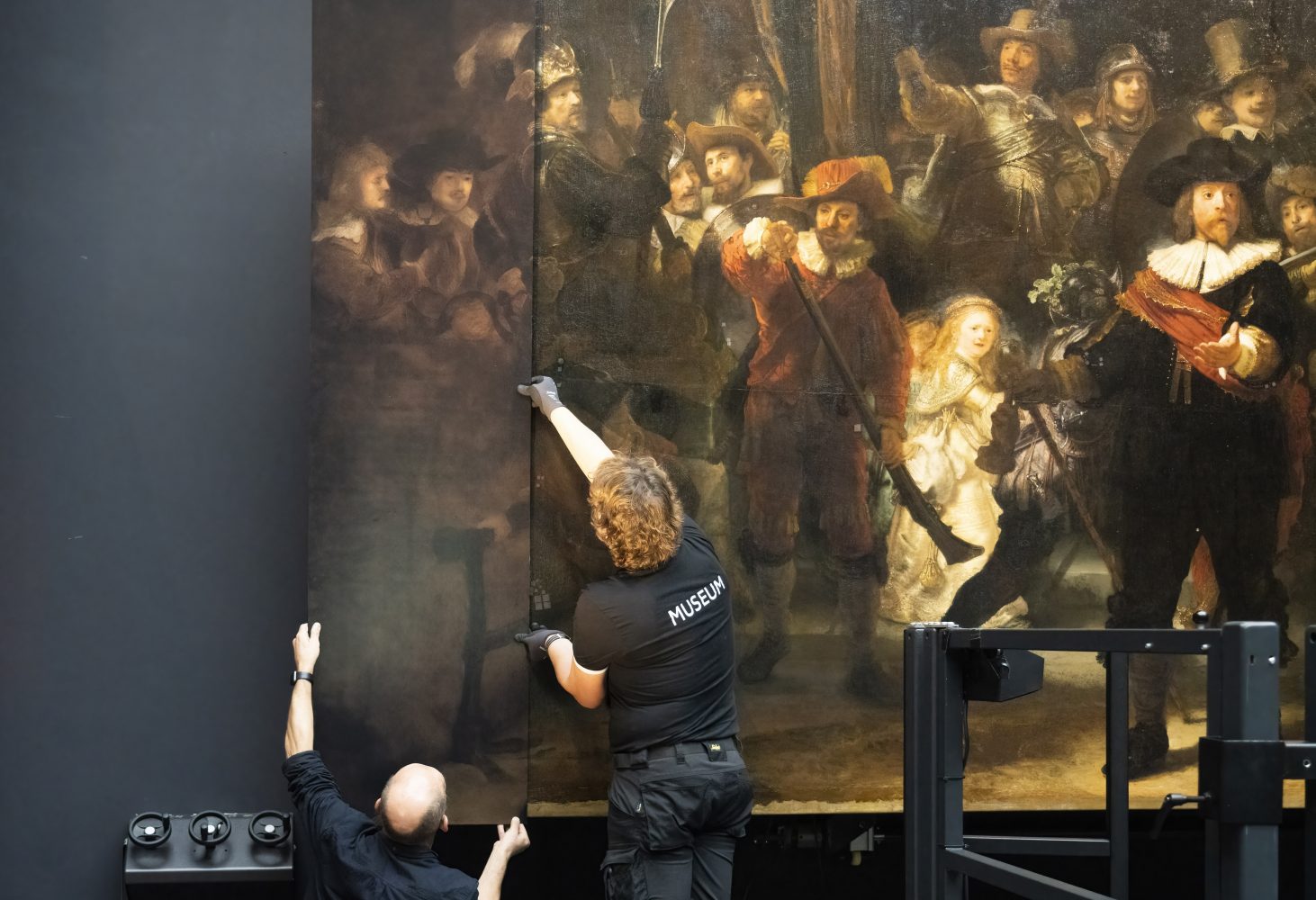
The Missing Piece of Rembrandt’s Night Watch: Art, Loss, and the Mystery Behind a Masterpiece

Few paintings in the world capture the imagination like Rembrandt van Rijn’s 1642 masterpiece, The Night Watch. Its size, drama, motion, and revolutionary use of light mark it as one of the most celebrated works of the Dutch Golden Age.
But fewer people know this:
The Night Watch we see today is not the full painting Rembrandt created.
A large section—about 60 cm (roughly 2 feet) from the left side—was cut away in the 18th century and is still missing today.
The story behind that missing piece is one of the most fascinating mysteries in art history.
Why Was Part of The Night Watch Removed?

In 1715, The Night Watch was moved from its original home—the headquarters of the Amsterdam Kloveniers civic guard—to Amsterdam’s Town Hall.
The problem?
The painting was too large to fit its new wall.
Rather than choose a different location, workers made a drastic decision:
They physically cut the canvas on all four sides.
The largest loss occurred on the left side, where an additional group of figures once stood. The cuts permanently altered the composition Rembrandt intended.
What was lost?
- Two full militia members
- Architectural details that balanced the perspective
- Depth and movement that enhanced the scene’s choreography
Only through a small surviving 17th-century copy—painted by Gerrit Lundens—do we know what the missing parts looked like.
The Mystery of the Lost Pieces
No one knows what happened to the removed sections.
Most historians believe:
- They were destroyed shortly after being cut
- They may have been discarded during renovations
- They were never catalogued or preserved
In an era before modern conservation practices, damaged or trimmed canvases were often considered expendable.
But their disappearance has fueled centuries of fascination.
Reconstructing the Original: Modern Technology Steps In
In 2021, the Rijksmuseum launched “Operation Night Watch,” the largest research and restoration project in the painting’s history. Using artificial intelligence, high-resolution photography, and analysis of the Lundens copy, experts digitally reconstructed Rembrandt’s intended composition.
The museum even printed full-scale recreations of the missing sections and temporarily displayed The Night Watch with the restored composition.
Visitors could finally see how Rembrandt’s original design looked—balanced, dynamic, and more expansive.
What did we learn?
- The missing figures increased the sense of motion
- The composition felt more symmetrical
- Rembrandt’s cinematic depth became more pronounced
- The painting’s story—the march of the militia—felt more complete
The recreated sections revealed a masterpiece even greater than the version we’ve known for 300 years.
Why the “Incomplete” Night Watch Still Matters
Despite being physically trimmed, The Night Watch remains iconic because of what it represents:
Innovation
Rembrandt broke from the stiff, posed style of militia portraits and infused the scene with movement, emotion, and realism.
Light as storytelling
His dramatic lighting directs the viewer’s eye like a film director shaping a scene.
Cultural identity
For the Dutch, The Night Watch symbolizes the Golden Age, civic pride, and artistic achievement.
Survival
The painting endured trimming, vandalism, war, and time—yet continues to inspire millions.
The missing piece only deepens its mystique, reminding us that even masterpieces have scars.
Conclusion: A masterpiece made greater by its mystery
The missing portion of Rembrandt’s Night Watch is one of art history’s most intriguing losses. Yet its absence adds to the painting’s story rather than diminishing it. Like any great cultural treasure, it invites curiosity, research, technology, and imagination.
In a way, the missing piece speaks to the resilience of art itself.
Even incomplete, Rembrandt’s vision remains whole.

%402x%20(1).svg)
%402x.svg)
%402x.svg)


%402x%20(dark).svg)
%402x%20(dark).svg)
%402x.svg)
%402x.svg)
%402x.svg)